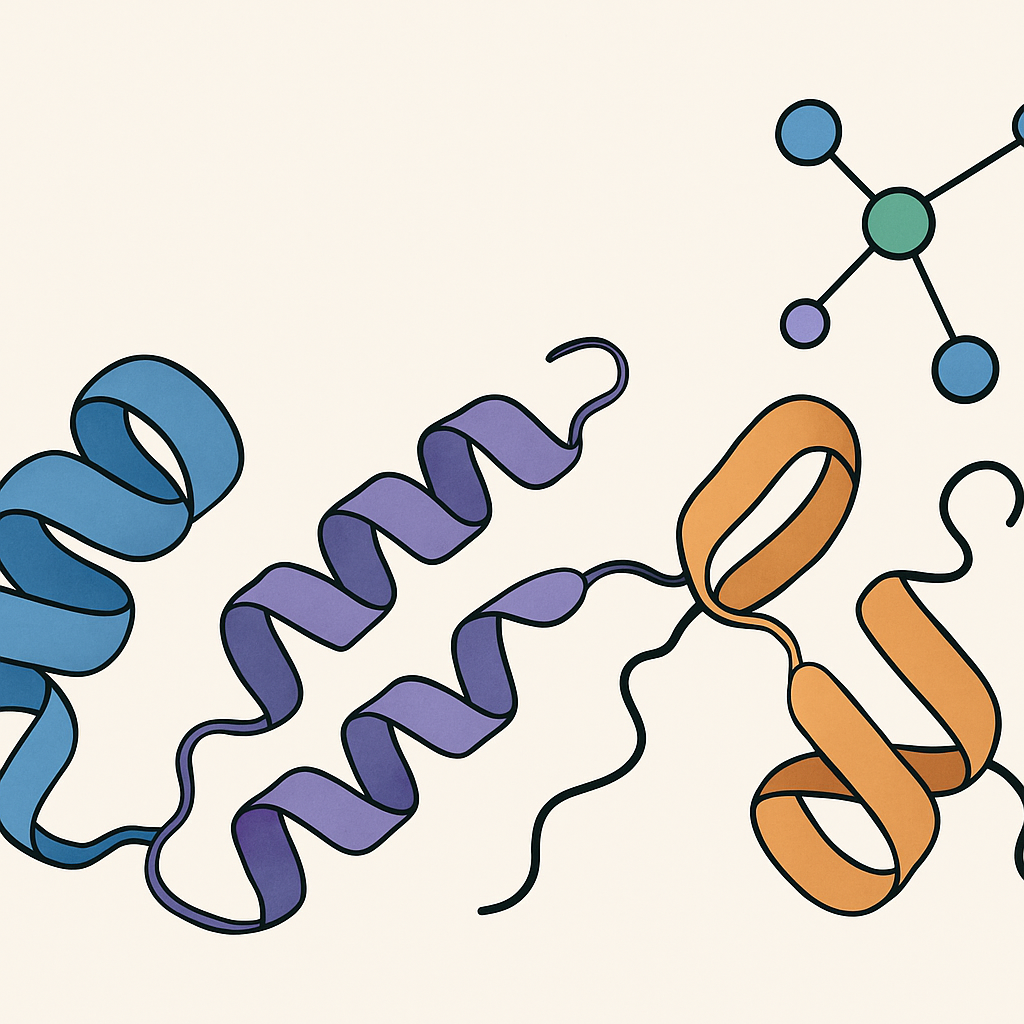Proteomics and Protein Interaction Studies: Unlocking the Mysteries of Cellular Function
Proteins are the fundamental building blocks of life. From catalyzing biochemical reactions to acting as structural components of cells, proteins perform countless functions essential to life. But understanding proteins in isolation is only part of the picture—much of biology’s complexity lies in how proteins interact with each other. This is where proteomics and protein interaction studies come into play.
In this comprehensive blog, we’ll explore what proteomics is, why protein interaction studies are crucial, the latest techniques used in the field, and how advancements in proteomic research are driving progress in medicine, biotechnology, and drug discovery.
Gentaur
Scientific Publications

Proteomics and Protein Interaction Studies: Unlocking the Mysteries of Cellular Function
What Is Proteomics?
Proteomics is the large-scale study of the entire set of proteins (the proteome) expressed by a genome, cell, tissue, or organism at a given time. Unlike the genome, which is relatively constant, the proteome is dynamic and constantly changing in response to environmental signals, developmental stages, or disease states.
Proteomics involves:
- Protein identification
- Quantification
- Post-translational modifications (PTMs) analysis
- Structural and functional characterization
This field has rapidly expanded thanks to advances in mass spectrometry (MS), bioinformatics, and high-throughput technologies.
Why Study Protein-Protein Interactions (PPIs)?
Proteins rarely function alone. They often interact with other proteins to form complexes, pathways, and networks that regulate nearly every biological process. These interactions are key to:
- Signal transduction
- Metabolic regulation
- Cell cycle control
- Immune responses
- Disease development, including cancer and neurodegenerative disorders
By mapping protein-protein interaction networks, scientists can better understand how cellular systems function and identify potential therapeutic targets.
Core Techniques in Proteomics and Protein Interaction Studies
Here are some of the cutting-edge techniques powering proteomic research:
1. Mass Spectrometry (MS)
MS is the cornerstone of proteomics. It allows precise identification and quantification of thousands of proteins in complex mixtures. Coupled with liquid chromatography (LC-MS/MS), it can detect even low-abundance proteins and PTMs like phosphorylation or ubiquitination.
2. Two-Dimensional Gel Electrophoresis (2D-GE)
This technique separates proteins based on their isoelectric point and molecular weight. Though partially replaced by LC-MS/MS, it still serves as a useful method for resolving complex protein mixtures.
3. Yeast Two-Hybrid (Y2H) System
This genetic approach detects binary protein-protein interactions in vivo. It is highly useful for building interaction maps, especially in model organisms.
4. Co-Immunoprecipitation (Co-IP)
Co-IP is a gold-standard method to validate protein interactions in a biological context. It uses antibodies to pull down protein complexes from a cell lysate, followed by Western blot or MS analysis.
5. Surface Plasmon Resonance (SPR)
SPR is a real-time, label-free technique used to study binding kinetics and affinity between two interacting proteins. It is particularly valuable in drug discovery.
6. Cross-Linking and Mass Spectrometry
This powerful combination helps to stabilize transient protein interactions and map interaction interfaces within complexes.
Types of Protein-Protein Interactions
Protein-protein interactions (PPIs) can be classified based on their structural, functional, and temporal characteristics. Stable interactions occur in protein complexes that persist over time—such as ribosomes or proteasomes—where subunits remain bound under physiological conditions. In contrast, transient interactions are temporary and often regulate dynamic cellular processes like signal transduction or enzyme activity. PPIs can also be obligate, where proteins are non-functional unless bound, or non-obligate, where proteins function independently but may interact in specific contexts. Furthermore, interactions can be homotypic (between identical proteins) or heterotypic (between different proteins), and may involve domain-motif recognition, surface-surface binding, or induced fit mechanisms. Understanding these types of interactions is crucial for mapping cellular pathways, predicting protein functions, and designing molecules that can modulate these interactions for therapeutic purposes. Learn More
Applications of Proteomics and PPI Studies
🔬 1. Biomarker Discovery
Proteomics helps identify disease-specific proteins in blood, urine, or tissue samples. These biomarkers are crucial for early diagnosis, prognosis, and monitoring treatment response in diseases like cancer, Alzheimer’s, and cardiovascular conditions.
💊 2. Drug Target Identification
Understanding protein networks reveals critical nodes that can be targeted by therapeutic agents. This systems-level insight can help design more effective and selective drugs.
🧬 3. Functional Genomics
By linking gene expression data with protein activity and interactions, researchers can better predict gene function and uncover novel roles of poorly characterized proteins.
🦠 4. Infectious Disease Research
Proteomics sheds light on host-pathogen interactions, enabling the discovery of virulence factors and immune evasion strategies, which can be targeted by new antimicrobial therapies.
Challenges in Proteomics and PPI Studies
Despite rapid progress, several challenges remain:
- Protein complexity and dynamic range
- Detection of low-abundance or membrane proteins
- False positives/negatives in PPI data
- Integrating multi-omics data (genomics, transcriptomics, metabolomics)
Ongoing improvements in sample preparation, instrument sensitivity, and computational tools are addressing these limitations.
Future Trends, Opportunities & Conclusion
Future Trends and Opportunities
🌟 Single-Cell Proteomics
Emerging technologies now allow proteomic analysis at the single-cell level, opening new doors in developmental biology and cancer research. Click Here For More
🔗 Integration with Systems Biology
Proteomics is becoming a core component of systems biology, enabling holistic insights into complex biological processes.
🌍 Personalized Medicine
Proteomic profiles can guide tailored treatment plans based on an individual’s molecular makeup—marking a leap forward in precision healthcare.
Conclusion
Proteomics and protein interaction studies are revolutionizing our understanding of biology. As tools become more sophisticated and datasets more comprehensive, the ability to decipher protein networks will transform not only fundamental research but also diagnostics, therapeutics, and beyond.
Whether you are a researcher, student, or life sciences enthusiast, staying updated with the latest trends in proteomics is essential for navigating the future of biomedical innovation.
